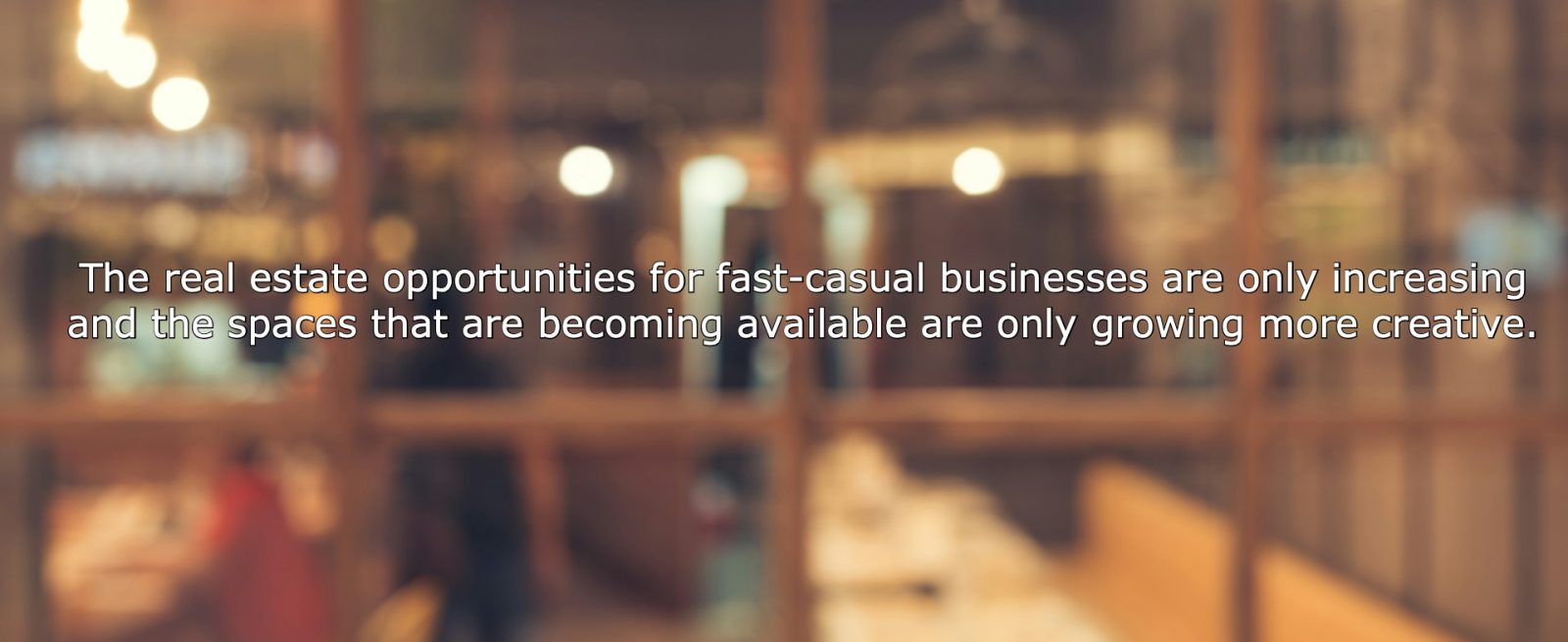‘Repurposed Spaces Offer Three Key Advantages for a Fast-Casual Brand: Cost, Time, and Customers.’
4 Min Read By MRM Staff
With big-box retailers closing up shop, more than 140 million square feet of desirable retail space has become available, presenting the opportunity for restaurants such as fast-casual concepts to expand their businesses.
Modern Restaurant Management (MRM) magazine tapped into Bonside CEO Neha Govindraj for insights into the real estate landscape for fast-casual. The fintech startup focused on providing private credit to brick-and-mortar concepts, at scale has seen a 16-percent growth in revenue year over year on their fast casual concept partners.
What real estate opportunities are you seeing for fast-casual brands and what are the economic factors in the mix that are making them available?
In more recent years, there's been a wider adoption of fast-casual concepts. Consumers across the country are interested in the core pillars of fast casual – convenience, pace and optionality – driving new real estate opportunities for expansion. Nowadays, you're just as likely to find a Sweetgreen in a Midwest suburb – like Fishers, Indiana – as you are to find one in Midtown NYC. It's the mass market lifestyle shift over the last 5-10 years that really fuels this.
With the closure of big-box retailers, there’s also prime opportunity for fast-casual brands to take advantage of the space that has become available by moving to expand their businesses in new and exciting ways. One example of this is the major rebrands taking place within more traditional retail spaces, like malls, that are being turned into modern shopping centers that house emerging businesses in the fast-casual space and beyond.
The real estate opportunities for fast-casual businesses are only increasing and the spaces that are becoming available are only growing more creative – the latest development we’ve seen is former office buildings that are being transformed into renovated dining destinations.
What kind of space are brands interested in? Has it evolved?
The types of spaces that brands are seeking have shifted quite a bit in recent years. Large, flagship storefronts were once the primary model dominating commercial real estate, as brands looked to establish their presence in a splashy and unmissable way. However, as rents and operational costs have continued to climb, the best and most strategic brands are increasingly focused on scaling lean.
By opting for smaller footprints, these brands can keep costs lower – whether it’s for rent, utilities, or staffing – while still optimizing their operations and prioritizing customer experience.
By opting for smaller footprints, these brands can keep costs lower – whether it’s for rent, utilities, or staffing – while still optimizing their operations and prioritizing customer experience. Smaller spaces also allow brands to foster deeper connections with their customers and local communities, offering a more intimate environment than a 50,000 + square foot store could provide.
Pedestrian-friendly outdoor shopping centers are also emerging as a popular format among both consumers and developers. These spaces strike a nice balance for brands, providing visibility in a highly foot-trafficked environment while maintaining an accessible, approachable atmosphere that keeps consumers coming back.
Why is there a rapid growth of fast-casual businesses?
There has been a shift in our culture that has modernized our way of life and significantly fueled the demand for fast-casual businesses. The core pillars of convenience, pace, and optionality meet customers where they are and have become an amenity that consumers not only expect but gravitate toward.
Economically, the fast-casual model is compelling because it grows supply alongside demand. With more capital to support these concepts, an increasing number of real estate opportunities to expand into, and a steady influx of business owners that are eager to tap into this profitable return profile, this sector has been able to scale quickly and successfully. This cycle of growing demand and expanding supply has also positioned the fast-casual sector for continued growth.
What are the advantages for a brand to go into repurposed space?
Repurposed spaces offer three key advantages for a fast-casual brand: cost, time, and customers. With the essentials for a business’ operations already built into the space, the costs for building out a space further and tailoring it to a specific business’ needs are significantly lowered upfront.
This cycle of growing demand and expanding supply has also positioned the fast-casual sector for continued growth.
These spaces also typically come with licensing and zoning permits prepared in advance and won’t cause delays on your opening or drag out the process further. And with a location that has already been a food-and-beverage destination previously, the repurposed space comes with a semi-established consumer base who are already familiar with the location and are likely to return.
What is the investment opportunity for those interested in the fast-casual sector?
Fast-casual businesses present an immense opportunity for investors, whether they be private credit, alternatives to private credit, family offices, or even commercial landlords. Landlords that are able to capitalize on the growth of the sector by leasing to fast-casual businesses and investors who can point their dollars towards businesses in the sector will be well-positioned to reap the long-term financial benefits.
The key for any type of investor is to identify the right players who balance delivering on the core pillars of fast-casual, while managing the economics of the business.

